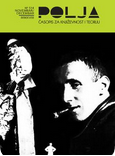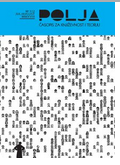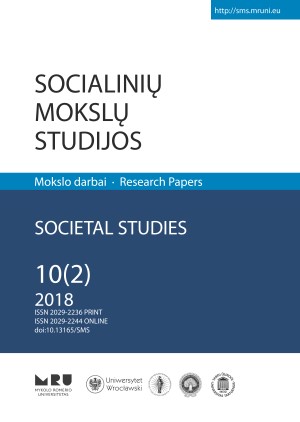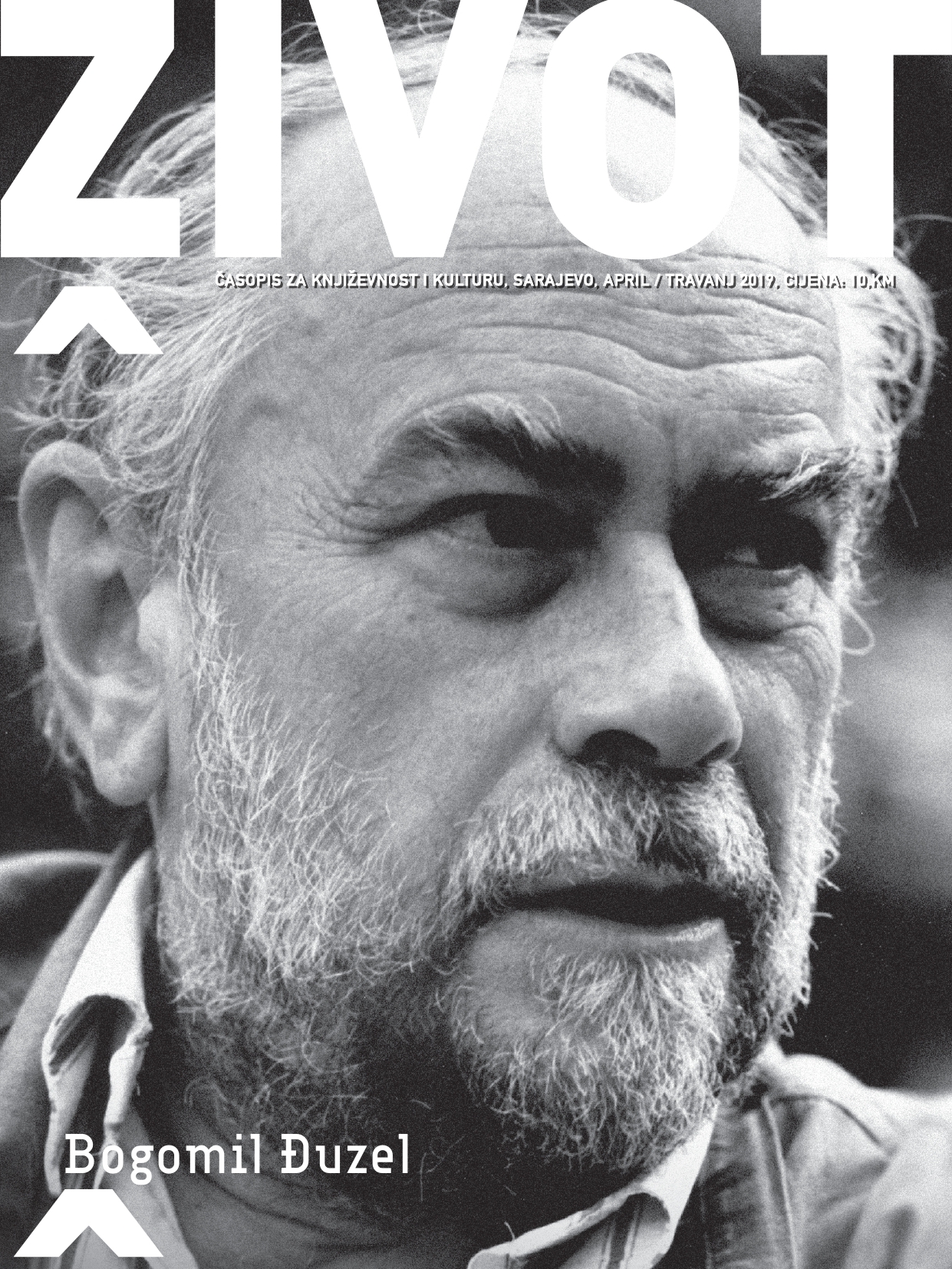
We kindly inform you that, as long as the subject affiliation of our 300.000+ articles is in progress, you might get unsufficient or no results on your third level or second level search. In this case, please broaden your search criteria.







This paper provides an insight into the vision of a post-human future in the short story entitled The Winter War in Tibet by Friedrich Dürrenmatt. It points to theories of the post-human, by which the creation of a new, cyborg-type of a human being and, at the same time, the defeat of the fiction of humankind, are implied. Through the apocalyptic vision of World War III, outlining the post-human conditions, as well as influences of human technical superstructure on the development of the identity of the soldier-protagonist, the author analyses the way the future and crisis of humanism are presented in the story. The analysis is methodologically rooted into the inter-disciplinary theory of new materialism, searching for the visions of life overcoming the established dichotomies such as organic versus non-organic, while a wider context of the story is explained through a biographic text on Dürrenmatt preceding the story. It shows that the post-human future is reflected in the vision of a cyborg soldier as a fragmented and lost human being, as well as in the overall destruction of the legacy of history and science.
More...
This paper presents the way Bernhard Schlink uses, deconstructs, and modifies the mythological background in the novel Homecoming. The structure of the novel, its characters and their characterisation, and questioning of the imposed reading and re-arranging of the structural elements of Odyssey is what makes it interesting for an analysis. Schlink uses the poly-valent character of Odyssey by drawing a parallel between the antic Odyssey and Carl Heinz/ John de Baur and Peter Debauer. Through problematising the established understanding of the myth of Odyssey, such as homecoming, Schlink tries to point to other possibilities. Among other things, he wonders whether Odyssey, that is, Peter and Carl.John came back to stay. What is the modern-day Odyssey like? Is homecoming in the 21st century possible at all? Is the notion of homeland a utopia? By applying the inter-textual method and the method of deconstruction, the author aims at providing answers to the issues raised, taking into consideration the necessity of deconstruction of existing myths for the purpose of re-reading them in line with the challenges of current times.
More...
The present article presents an overview of the contemporary German adolescent novel which, having originated within a postmodern context, betrays traits typical of that kind of fiction. Although they pose a considerable challenge to their readers, these novels are received and researched in the context of young adult literature. The article begins with a summary of the history of the adolescent novel, which is followed by an exploration of adolescence as well as the specific features that distinguish novels for adolescents from other, similar types of novels. The main part of the article discusses two contemporary adolescent novels, with special focus on their story (the first example) and narrative technique (the second example). The main argument is that, due to their stories and postmodern narrative techniques, contemporary adolescent novels have become a challenging subject for readers and researchers alike.
More...

The paper deals with the latest literature concerning the concepts of poetics and event. The searches conducted by the author are based on Petrer Zajac´s conceptual reflexion on new poetics, which is understood by him as poetics of text and poetics of event. In recent German (and partly also Czech) publications Kazalarska is seeking impulses for further development of theoretical background which would make it possible to grasp interconnections between poetics of text and poetics of event and track the points of transition between them as well as their potential overlaps and entanglements. The first part of the paper shows the current use of the conceptual dimensions of poetics, which is related to both the process of developing literary science into a cultural science and the process of establishing the concept of performativity. A comparably big „boom“ can then be recognized in case of poetics of event, which has been closely examined by literary science lately. The other part of the paper is focused on the question asking to what extent it is possible to talk about „eventness“ on the level of a literary text. What becomes the centre of attention is the materiality of writing, which belongs to the newest fields of poetics and which fulfils its poetic potential exactly on the interface between poetics of text and poetics of event and oscillates between the two types of poetics. The subject of the final thought is the literary historical place and poetological significance of the materiality of writing within Slovak literature after 1945.
More...

This article discusses the shift towards the portrayal of Nazi perpetrators in the German novel after 1989 in the context of the public debate over Vergangenheitsbewältigung ('reckoning with the Nazipast'). It focuses on two well-known novels published in 1995, Der Vorleser by Bernhard Schlinkand Flughunde by Marcel Beyer, which offer an ambivalent picture of Nazi protagonists. Hanna Schmitz and Hermann Karnau are depicted as normal people who become perpetrators under certain sociohistorical conditions that the novels seek to investigate. I base my comparative analysis of the factors contributing to this deeply unsettling process on the social psychological perpetrator model offered by the Holocaust and Genocide Studies professor James E. Waller, while also discussing the implications of the fictionally constructed perpetratorship for the contemporary memory culture in Germany.
More...
This paper deals with some specific features of religious plots and images in the German exile novel. The author analyses how they function in exiled novels by German exiled writers such as Erich Maria Remarque, Lion Feuchtwanger, Thomas Mann, Anna Seghers and Klaus Mann. These works are considered to have a particular organization of space and plot as well as subjective organization, and to belong to a specific literary genre. Religious images and plots are analysed in relation to the novels’ organization of space and time. David and Goliath, and Noah’s Ark are images taken from the Bible that can be found in the novels studied, and plots such as the history of Joseph and Exodus are harnessed by the authors. The story of the Israelite’s exile to Egypt serves Thomas Mann as a thematic source, while he expresses emigrant consciousness in “Joseph and His Brothers”. Other novels are devoted to the events of 1933 to 1945, and their authors add biblical plots and images to them to highlight axiological markers of the exile space and help the writers express their emigrant world view. It is also shown in this study that these images are used alongside and for similar purposes to mythological images.
More...
The purpose of this paper on the novel Katzenberge (Cat’s Mountains) by Sabrina Janesch is to locate it in the context of a debate on the German memory culture(s) and its representation in Germanlanguage literary texts. This classification is justified by a specific regional and generational character of the war memories in the novel. Within this short observation, the author of the paper is interested not only in historical, sociological and cultural study questions, which are connected directly to this topic, but primarily and especially, in what way and using what means the pictures of Silesia and of Kresy were created as memorial sites in the novel Katzenberge (Cat’s Mountains), which is based on autobiographical motifs. The research problem, which appears in this study, can be formulated as follows: In the PolishGerman history of forced resettlements from the period of World War II, there are gaps whose existence in a more or less significant way distorts the perception of this issue, both at the level of historical reconstruction, in which certain aspects of common history are omitted, as well as at the level of reflection on them in literary texts. The article proposes a thesis that the novel Katzenberge (Cat’s Mountains) by Sabrina Janesch fills an important gap in German-language literature, which is the history of Polish refugees and people forcibly displaced from the Kresy to Silesia. Thus, the literary topography of this region expands, becoming a place where the fates of Polish Kresowians and German Silesians intersect and overlap, while the region itself assumes the form of a palimpsest. The following research methods were used: narratology and hermeneutics. These research methods allow in-depth analysis of the structure and content of the text, as well as facilitate an attempt to interpret it in the context of the issues under investigation.
More...
Poetry of Artur Becker: - О Индиосима Патагоније и не само; - Кафана Ел Перал.
More...
Откако се памти, француско горје није задесила тако дуга и сурова зима. Бистар, леден и опор ваздух вио се недељама над брдима. Дању, под јарко-плавим небом, са стрмих падина сјактале бескрајне загасито-беле простирке снега, док би ноћу, мален и јасан, Месец клизио изнад њих, Месец нажутог сјаја, мргодан, хладан и страшан, чија се јарка светлост на снегу преливала у сабласну модрину и личила на сушто отеловљење мраза. [...]
More...
Poems by Durs Grünbein: - Amabo, amabis... amabunt; - Једна једина сребрна конзерва; - Бр. 5; - Бр. 8; - Алба.
More...
Ko se boji knjiga još? Akcija 1005. Uklanjanje tragova NS masovnih zločina 1942–1945. Reviewed by Amir Kamber.
More...